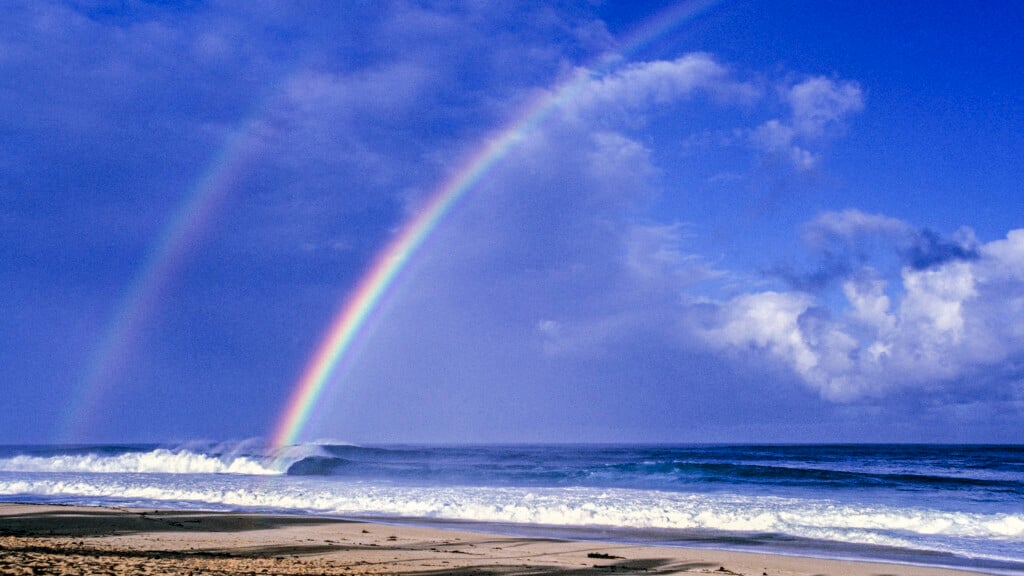Makauwahi Cave is Kauai’s best-kept secret
Hawaii’s largest open-ceiling limestone cavern highlights the past and aims to restore its future.
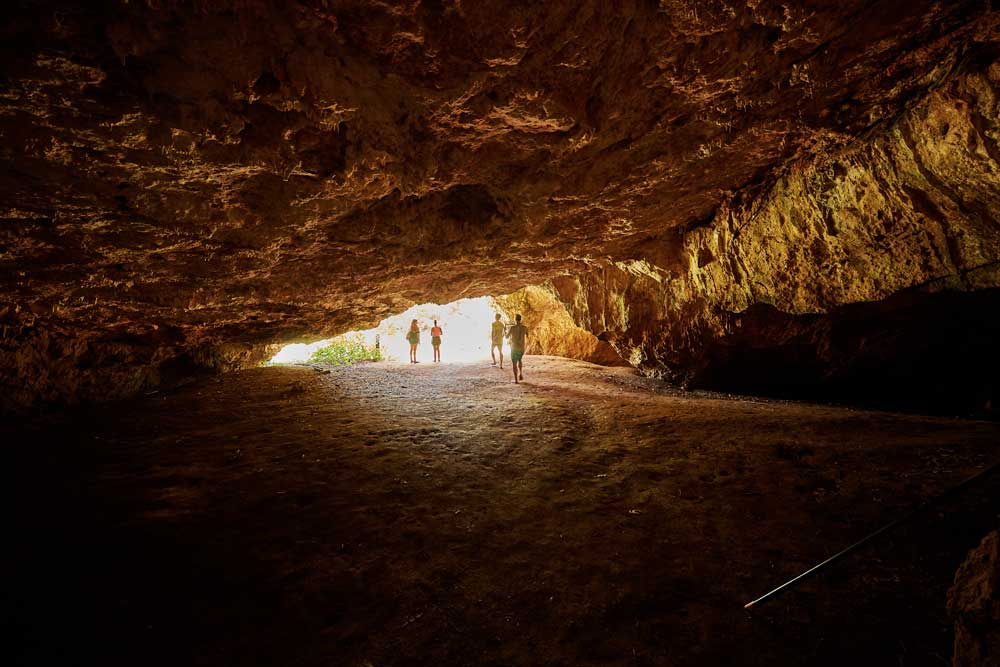
Located on the south side of Kauai, sandwiched between CJM Country Stables and Gillan’s Beach is the Makauwahi Cave Reserve, a 17-acre plot of land that hosts restoration projects hoping to repopulate native plants. Finding the reserve is no easy task and we recommend that you confirm with locals and fellow hikers along the way that you’re heading in the right direction. The real treasure here, nestled among shrubbery and across a bridge is a literal hole in the wall.
The small, inconspicuous triangular puka (hole) is the entrance to Makauwahi Cave. Entering will require you to crawl on all fours, however, at the end of this cramped passageway is a sight that can only be described as prehistoric. The space opens up into a circular amphitheater, with walls made of sedimentary rock that boasts its age with jagged layers. Where you may expect to find a ceiling is replaced by blue Kauai skies, as the once underground chamber caved in roughly 7,000 years ago. Another eye-catching feature is the greenery, as the cave is inhabited by flora native to Kauai, such as the once endangered Pritchardia palm.
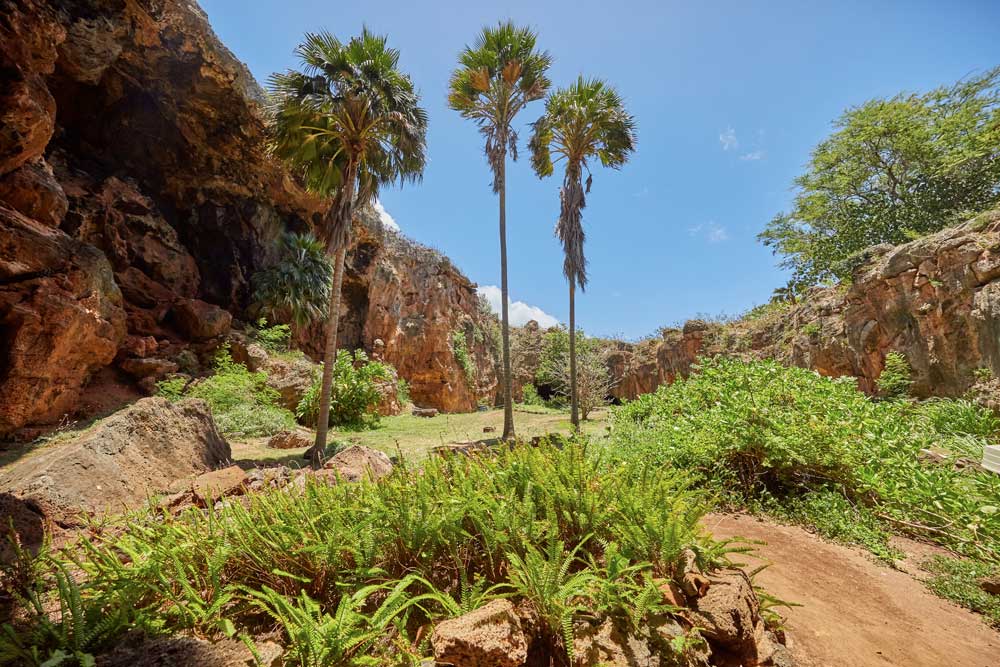
Photo: David Croxford
Native flora, looming palms and ancient rock formations are just some of this cave’s surface-level attractions. Its limestone walls hold over 10,000 years of sedimentary record and archeologists have found historic samples of pollen, seeds, Polynesian artifacts and animal bones perfectly preserved here. This is due to the neutral level of acidity in the lake that existed here until the 1950s. The cave also houses a rare species of blind cave spider; however, the spiders are off-limits to visitors and reside deep within the cave.
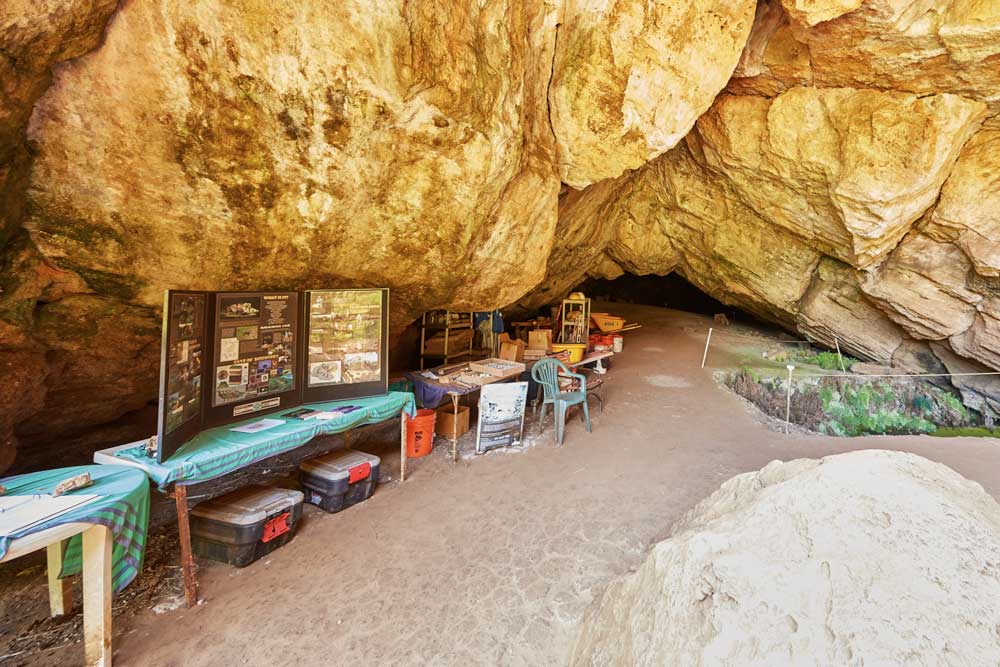
Photo: David Croxford
The man who will tell you this, and more, is Richard Segan, local radio show host and self-proclaimed storyteller of the Makauwahi Cave. According to the seasoned guide, the cave was once inhabited by a Polynesian seer. “He’d have a little fire on his platform, and you’d come in with a question and he’d throw his charcoal into the water,” Segan says. “The smoke would blow up and around and he’d read the smoke and give you an answer to your question, so Makauwahi means ‘eye of the smoke.’” The tale Segan paints, which was found in a child’s notebook circa 1880 in the form of an interview with a village elder, is captivating, while Segan’s enthusiasm towards the cave and its history is infectious.
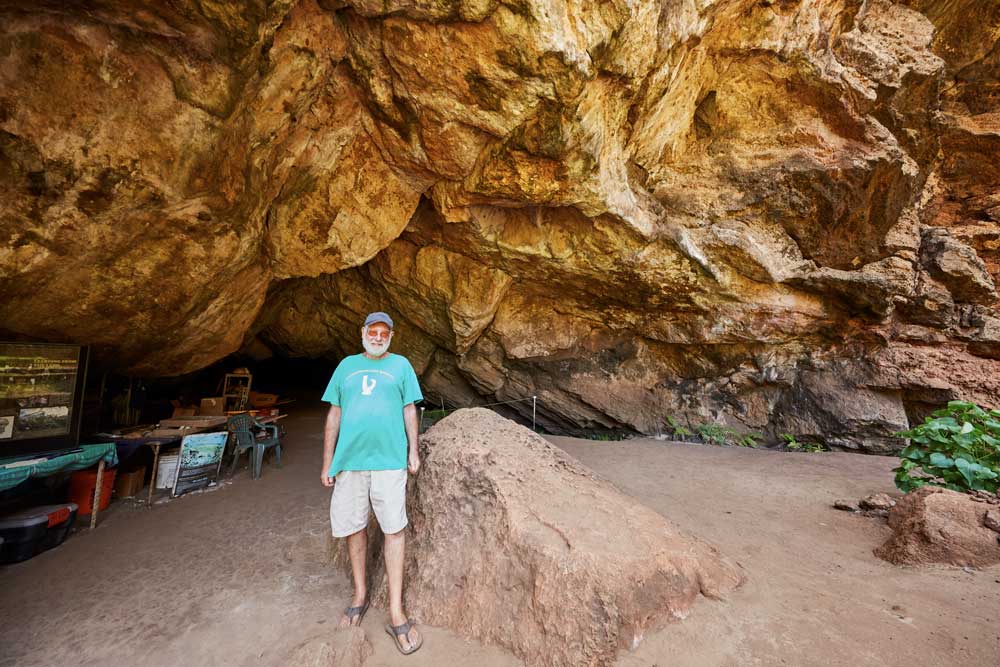
Photo: David Croxford
Sometimes the best things in life are hard to find, and Makauwahi Cave is a stellar example. Saying that the trail to this living museum is off the beaten path would be an understatement, however the light at the end of this tunnel is well worth the trouble.
Donations are welcome, with a recommended $10 per person. Guided tours are given everyday from 10 a.m. to 4 p.m.
Directions: Continue past the Grand Hyatt on Poipu Road. The road turns to dirt by the golf course; continue for approximately 2 miles, until you get to a fork in the road—a private road with a Grove Farm sign on the left and another road that continues on the right. Take the road on the right. You’ll continue along fencing, and see a horse stable. To the right of CJM Stables, the road dead ends where you are able to park your non-four-wheel drive vehicle. Once you’ve arrived, you’ll continue on foot at the small path that leads to the rocky coastline. Follow the coastline until you reach a small, secluded beach. From here, look for a sign that says “Makauwahi Cave Trail.” This will point you in the direction of the entrance, and a small wooden bridge will confirm that you’re going in the right direction. The cave entrance will be directly across the bridge.

